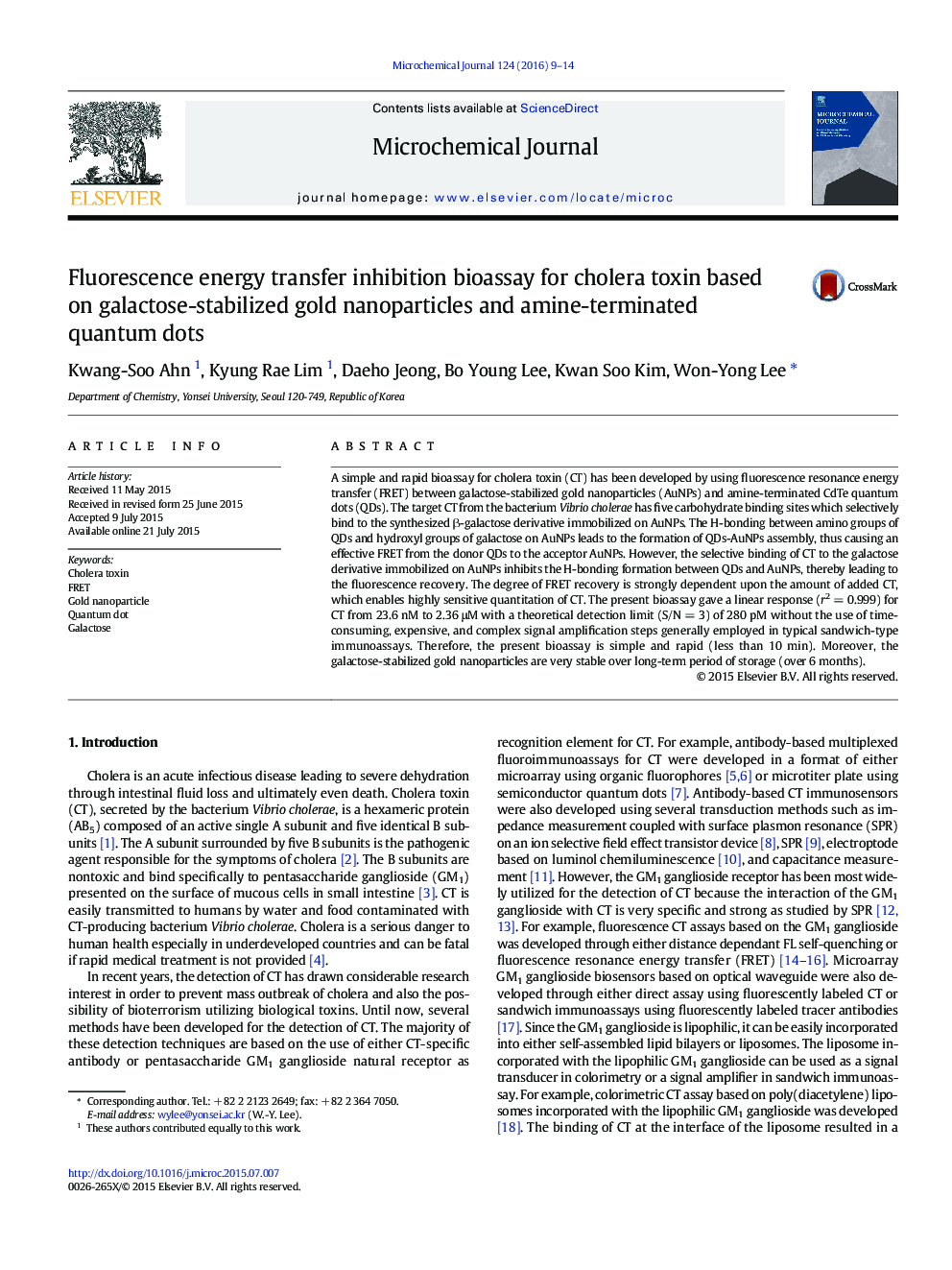| Article ID | Journal | Published Year | Pages | File Type |
|---|---|---|---|---|
| 7641844 | Microchemical Journal | 2016 | 6 Pages |
Abstract
A simple and rapid bioassay for cholera toxin (CT) has been developed by using fluorescence resonance energy transfer (FRET) between galactose-stabilized gold nanoparticles (AuNPs) and amine-terminated CdTe quantum dots (QDs). The target CT from the bacterium Vibrio cholerae has five carbohydrate binding sites which selectively bind to the synthesized β-galactose derivative immobilized on AuNPs. The H-bonding between amino groups of QDs and hydroxyl groups of galactose on AuNPs leads to the formation of QDs-AuNPs assembly, thus causing an effective FRET from the donor QDs to the acceptor AuNPs. However, the selective binding of CT to the galactose derivative immobilized on AuNPs inhibits the H-bonding formation between QDs and AuNPs, thereby leading to the fluorescence recovery. The degree of FRET recovery is strongly dependent upon the amount of added CT, which enables highly sensitive quantitation of CT. The present bioassay gave a linear response (r2 = 0.999) for CT from 23.6 nM to 2.36 μM with a theoretical detection limit (S/N = 3) of 280 pM without the use of time-consuming, expensive, and complex signal amplification steps generally employed in typical sandwich-type immunoassays. Therefore, the present bioassay is simple and rapid (less than 10 min). Moreover, the galactose-stabilized gold nanoparticles are very stable over long-term period of storage (over 6 months).
Related Topics
Physical Sciences and Engineering
Chemistry
Analytical Chemistry
Authors
Kwang-Soo Ahn, Kyung Rae Lim, Daeho Jeong, Bo Young Lee, Kwan Soo Kim, Won-Yong Lee,
